#american Jazz standards
Explore tagged Tumblr posts
Text
Die Flugblattaffäre. (Welche Auswirkungen sie hatte und Nachtrag.)
Tipp Ei Po. *Tipico
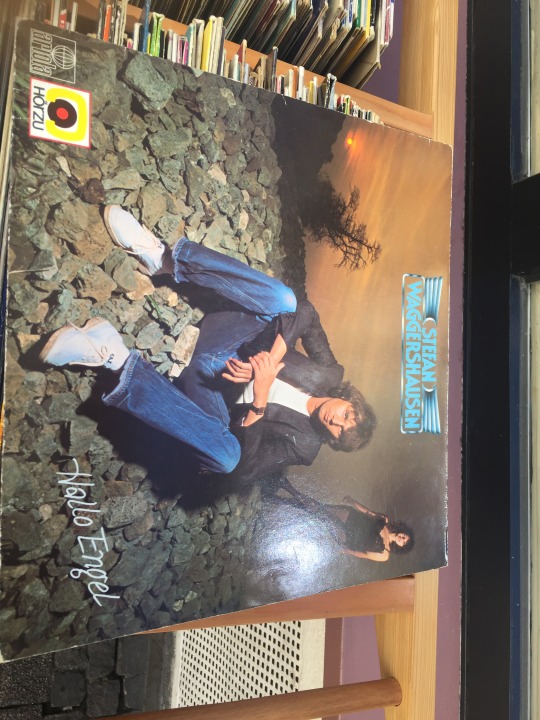













'Tipp Ei Po' (Tipico als Sponsor des FC Bayern Münchens)
'Alles was noch danach kam, oder weil es das so noch konnte'

'Why not then take just all of you'

Erinnerungskultur.


'Deutsche besaßen nach dem 2. Weltkrieg generell zu viele und zu große Erinnerungsluecken. Und so wurden auch nur wenige der damaligen Täter und Mittäter später wirklich vor Gericht belangt dafuer und bestraft'. Es sind aber immer andere Zahlungsformen oder Weisen noch genauso denkbar, wie man auch 'bezahlen' kann, selbst ein jetziger Wohnungsinhaber der die Wohnung vom Vorgänger übernahm (nicht jüdisch).



tief schlafender sitzender Buddha (mit von beiden Händen geformten Herzzeichen) *der gealterte Butt oder Ar***. das 'h' als Einzelbuchstabe nur und in der engl. Sprechweise.




Das Showbusiness, dem anderen eine gute Show lediglich immer wieder nur noch genauso auch dar zu bieten, das beherrschen heutzutage längst schon auch andere! Es muss nicht immer nur derjenige sein so der es einst erfand, (und somit also der Angelsachse!)


'Heidelberg, du hast mich wieder!!' (Eher war es hier Darmstadt.)

Sack + Sch(w)ul + hoch.


'Holt sofort jetzt den Direktor!'
'Aber sind sie es denn nicht selber??'
'Ich bin es nur gewesen, aber das liegt schon sehr lange zurueck!! Und auch nur für Musik!!'
'Genauer gesagt liegt das nun schon ueber 35 Jahre zurueck!'
'Sie wirken aber gar nicht so, als wären sie in der Tat schon so alt, wie sie sagen!'
#american Jazz standards#All of me#die Erinnerungskultur#cool#Türen#Schulen#Wie ist der aktuelle Schuldenstand#der Schuldenabtrag#Schulden ausgleichen#Schulden ganz streichen#etwas gut machen#Alles wird gut!
0 notes
Text
"He's bisexual, if he wants sex he has to buy it!"
-Dean Martin, 1977
#Jazz#Quote#Funny#Dean Martin#Frank Sinatra#American standards#Bi#Bisexual#It made me giggle what can I say#Those queers
15 notes
·
View notes
Text

Tony Bennett
#history#vintage#photography#musician#music#portrait#black and white photography#american history#italian american#italian american history#jazz#crooning#crooner#singer#singing#tony bennett#modern jazz#standards#performer#jazz musician#jazz singer#american#anerica#jazz history#u.s. history#u.s.#20th century history#20th century#twentieth century history#twentieth century
7 notes
·
View notes
Text
The Brilliance of Keith Jarrett: A Jazz Legend
Introduction: Keith Jarrett is a name synonymous with virtuosity, innovation, and boundless creativity in the world of jazz. Born seventy-nine years ago today on May 8, 1945, in Allentown, Pennsylvania, Jarrett’s musical journey began at a young age. His prodigious talent was evident early on, and he quickly established himself as a gifted pianist and composer. Early Career and Formation of the…

View On WordPress
#American Quartet#Art Blakey#Charles Lloyd#Charlie Haden#Dewey Redman#Gary Peacock#Jack DeJohnette#Jazz History#Jazz Pianists#Keith Jarrett#Michala Petri#Michelle Makarski#Miles Davis#Paul Motian#The Köln Concert#The Standards Trio
9 notes
·
View notes
Text
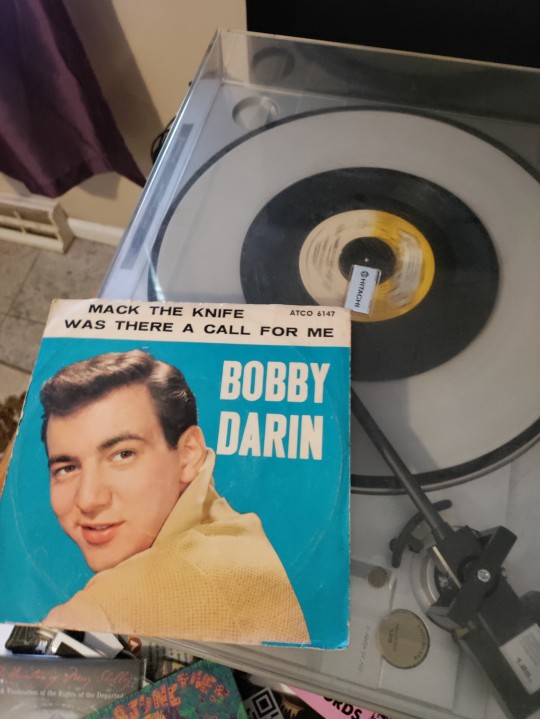
1959
3 notes
·
View notes
Text



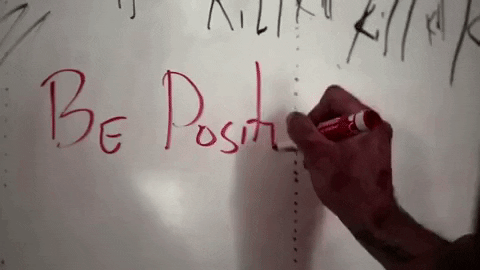

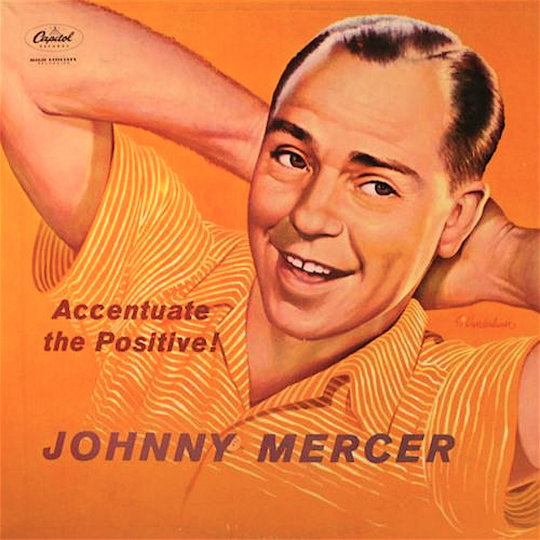


SONG OF THE WEEK: “Ac-Cent-Tchu-Ate the Positive.” https://johnnyjblairsingeratlarge.bandcamp.com/track/ac-cent-tchu-ate-the-positive This song was written by the great American songwriters, Harold Arlen & Johnny Mercer in 1944. Mercer sang it in the style of a sermon. He described his inspiration for the lyrics: "[My] publicity agent went to hear a sermon by Father Divine, and his subject was 'you got to accentuate the positive and eliminate the negative.’ …and I said 'Wow, that's a colorful phrase!'" The song has been covered many times in diverse styles, from country to jazz to punk. It reached me through the film soundtrack L.A. CONFIDENTIAL.
This track is from my collection of songs I play in assisted living homes. For some time I've been performing for people in various stages of dementia and disability. I've seen miraculous things happen while singing to people who are considered to be "disconnected"—suddenly they're singing, clapping, tapping, dancing...all because of these familiar tunes. There is proof-positive that music reaches into more areas of the brain than language, math, and other forms of communication. You can help me to continue this work. Your download my music helps to underwrite my expenses to keep doing musical service in these homes. Thanks for tuning in and stay positive!
#Positivity #JohnnyMercer #GreatAmericanSongbook #HaroldArlen #popmusic #standards #jazz #FatherDivine #LAConfidential #RussellCrowe #assistedlivinghome #carehomes #dementia #Alzheimers #disability #JohnnyJBlair #Singeratlarge
#johnny j blair#singer songwriter#music#singer at large#san francisco#pop rock#Positivity#Johnny Mercer#Great American Songbook#Harold Arlen#pop standards#jazz#Father Divine#LA Confidential#Russell Crowe#assisted living home#care homes#dementia#alzheimers#disability#Bandcamp
2 notes
·
View notes
Text

Dancing in the Dark and Other Music of Arthur Schwartz by Dave McKenna Concord Jazz 1986 Jazz / Swing / Stride / Vocal Jazz / American Popular Song / Piano Jazz / Standards / Cool Jazz
#jazz#swing#stride#vocal jazz#american popular song#piano jazz#jazz piano#standards#cool jazz#music#80s#80s music#80's#80's music
1 note
·
View note
Text
229: Ella Fitzgerald // ...Sings the Cole Porter Song Book
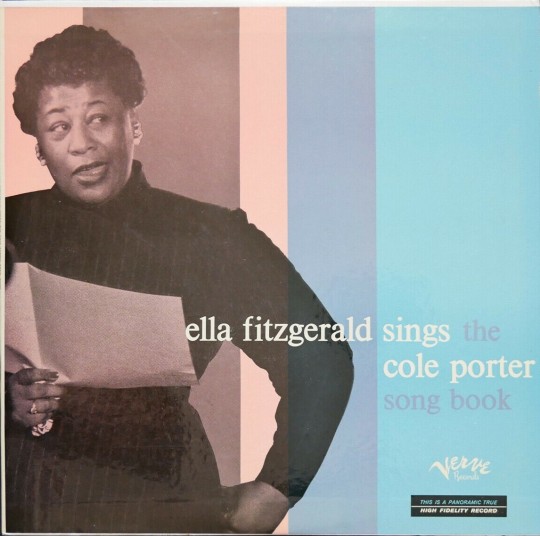
Ella Fitzgerald Sings the Cole Porter Song Book Ella Fitzgerald 1956, Verve
Cole Porter was the grandson of the richest man in Indiana, a homosexual of unimaginable power, the cleverest socialite since the death of Oscar Wilde. I’m not sure it’d be possible to write songs of such manner-born urbanity without his background, rhymes tumbling down grand staircase rhythms like a platinum slinky of immaculate design, asking the existential questions as only the fabulously wealthy would (“should I order cyanide / or order champagne?”). But Ella Fitzgerald, whose stable working class upbringing dissolved after her mother’s death into a teenaged existence barely above the streets, proved that anyone with sufficient ability (and, importantly, diction) could be these songs’ finest interpreter. The substantial liner notes to my ’76 reissue of Ella Fitzgerald Sings the Cole Porter Song Book don’t mention Porter’s sexuality; they also refer to the fact that a teenaged Fitzgerald looked so poor that numerous impresarios refused to even listen to her tryouts with such genteel vagueness that you get the impression she just had terrible fashion sense. But in truth that sort of mannered elision is the way both artists, each for their own reasons having to do with security and sensibility, would’ve wanted it. On the Porter Song Book, they are simply, archetypally Ella and Cole, elegance and wit personified.
youtube
Even more than 65 years on, it is hard to imagine a greater soundtrack to those special nights when we permit ourselves luxury. It’s in the songs themselves of course, splendid renditions of Porter’s finest (“Begin the Beguine,” “Night and Day,” “You Do Something to Me” and on and on), and in their generous apportioning at eight songs per side over two LPs. Whether you’re listening intently over a glass of wine at home, or if during a party you allow your ear to drift from the conversational hubbub to the glamorous strains that have been subtly guiding the energy of the room all night, there is something marvellous about the Porter Song Book’s inexhaustibility. There is always a song you’ve passed over two dozen times before that suddenly reveals its magic, a couplet that slides itself into your wallet of timeless bon mots (on this listen: “there's someone I'm trying so hard to forget / don't you want to forget someone too?”).
229/365
#ella fitzgerald#cole porter#verve#vocal jazz#american standards#standards#swing#tin pan alley#american songbook#big band#'50s music#female singer#female musicians#anything goes#music review#vinyl record#buddy bregman#queer music
1 note
·
View note
Text

*sighs deeply and checks Lady Gaga’s 2023 Vegas setlist* 1 Broadway, 4 TV/film themes, 2 Latin American standards, 1 Italian-American standard, 1 Neapolitan standard (?????), 1 French standard, and all of 1 jazz standard. Which is mostly just swing and big band.
#music#jazz#lady gaga#*bernie sanders voice* i am once again asking you#not to confuse jazz with swing and/or…literally 20th century pop#really not liking this wholesale lumping into ~jazz standards#trying to gentrify show tunes and movie theme music into the jazz umbrella i see#i got my eyes on you 👁️#i mean i completely get saving the music from obscurity but#let’s not forget the immigrant whites and broadway people involved#like that’s literally the majority of her oldies ser#whatever happened to#the great american songbook#let’s bring that back shall we#cristina is a music lover
1 note
·
View note
Text
Cab Calloway - St. James Infirmary 1933
"St. James Infirmary" is an American blues and jazz standard of anonymous origin that emerged, like many others, from folk traditions. Louis Armstrong brought the song to lasting fame through his 1928 recording, on which Don Redman is named as composer; later releases credit "Joe Primrose", a pseudonym used by musician manager, music promoter and publisher Irving Mills.
By 1930 at least twenty different recordings had been released. In 1933, Cab Calloway's version anchored the classic Betty Boop cartoon Snow White and his instrumental version introduced another that featured Calloway's related hit song "Minnie the Moocher".
"St. James Infirmary" received a total of 75,9% yes votes! Previous Cab Calloway polls: #130 "Minnie the Moocher".
youtube
950 notes
·
View notes
Text
youtube
Tigran Hamasyan, who is currently touring Europe with music from StandArt, his new album of American standards, has shared this full concert performance of songs from the album. Hamasyan and the trio featured on StandArt—bassist Matt Brewer and drummer Justin Brown—filmed the performance at Pôle PIXEL in Villeurbanne, France.
#tigran hamasyan#standart#american songbook#jazz standards#piano#jazz#matt brewer#justin brown#villeurbanne#pole pixel#nonesuch#nonesuch records#Youtube
0 notes
Video
youtube
but most of all, I wish you love
0 notes
Text
may I present the updated, the bigger, and simply the better...

thank you so much @wrathofrats for helping me gather pictures and organize I and II era ghouls <3
Chain Era I


Ibanez ICB300EX
Gibson Thunderbird (It was played only once and all the pictures are shitty so I don’t know the specifics, only gathered the model by the shape)
Lake Era I


White on black Rickenbacker 4003
Black on white Fender American Performer Precision
Lake Era II

Black on white Fender American Performer Precision
River Era II


Black on white Fender American Performer Precision
Black Fender FSR Player Precision
Delta, Mist & Dewdrop Era III






Black on white Fender American Performer Precision
Black Fender Blacktop Jazz
Rain Era IV




Black on white Fender Standard Jaguar
White Fender Standard Jaguar (they don't really sell them all white so I assume the pickguard is either vinyl wrapped or comes from a different bass)
White Fender American Professional Jazz
Black Fender American Professional II Jazz (they usually come with different colored pickguard so again I assume it's either wrapped or from a different bass)
Rain Era V



Black on white Fender American Professional II Jazz (with additional mods. also, they usually come with different colored pickguard so again I assume its either wrapped or from a different bass)
Black Fender American Professional II Jazz (read parenthesis above)
Black on white Fender Standard Jaguar
if anyone has any questions my askbox is open as usual :3
#the band ghost#nameless ghouls#rain ghoul#dewdrop ghoul#mist ghoulette#delta ghoul#lake ghoul#river ghoul#water ghoul#hypnone gear talks
279 notes
·
View notes
Text
So I'm annoyed at a collage of minidiscs ending up in my timeline because I follow "diskette" but that's not important...
You know how weird the etymology of "diskette" is?
So, it's a portmanteau of "disk" and "cassette".
Disk as in "a round flat thing", and it's the American spelling, because the diskette was invented by IBM, an American company. Disk (usually spelled "disc" in commonwealth countries) comes from the Greek dískos, as in "discus", the circular thing you throw for sport.
And floppy disks are primarily a circle of magnetic material. That's actually how they were first conceived, as a flexible version of the rigid metal magnetic circles used in hard drives. But they quickly realized that it was impossible to keep them clean: fingerprints and dust stick to the surface too easily, ruining them. So they were given a vinyl (and later, plastic) jacket, so they could be safely carried around.
And thus, diskette was coined. Sometimes you'll see it etymologized as "small disk", like a disk-ette, but that's wrong: it's a portmanteau with cassette. Because cassettes were made by taking reel to reel magnetic tape and putting it in a small case, so they can be quickly and reliably loaded.
And why are cassettes called that? Well, it's French. But in French it's quite simple: it's the diminutive of "casse", which means case. It's a little case. You put the tape in a little box. It's a cassette.
So similarly, diskette was made by cassettizing "disk". You put the disk in a little case. It's a disk cassette, a diskette.
This sort of thinking also explains why they're called "floppy disks" when they've been hard plastic since 1984: it's just like how we call cassettes "tapes". They're not tape, they're a little plastic box containing tape. Tape is a thin flexible thing that you wrap around a spool, not a little plastic box. But we call them "tapes"/"a tape" as synecdoche: a part is used to represent the whole. It's a "tape", fittingly because the tape is the important part. It's the part that stores the audio, the rest is just packaging to keep it safe and reliable.
Floppy disks are similarly called such: the floppy part is the magnetic disk inside the vinyl or plastic case. We're calling the whole package by the part that actually stores the data.
And in any case, they were named as such in comparison to "hard disks": the metal or glass surfaces used by hard drives.
Anyway, three final things:
1. You ever wonder why it's Floppy Disk but optical discs? You have a DVD* disc or a CD (compact disc), not a DVD Disk or Compact Disk. I already basically explained it: floppies were invented in the US, and compact discs came from a Philips/Sony partnership: a Dutch/Japanese partnership. So they used the commonwealth spelling, thus it became a standard to refer to optical media as "discs".
2. My favorite silly floppy fact comes from this sort of thing: so the first floppies were 8", then the 5.25" model was invented, and in 1981 we got the 3.5" floppy. These are by far the three most common floppy disks, and those are their names, used nearly** universally in English.
But here's the thing: one of them is wrong.
8 inch floppy disks? They're eight inches even. 5.25 inch floppy disks? They're 5.25 inches even.
3.5" disks are actually 3.543"!
This is for the same reason why we have disk vs disc for floppy and optical media: 8" disks were invented by IBM, an American company. 5.25" disks were invented by Shugart/Wang, both American companies.
3.5" disks were invented by Sony, a Japanese company. They're not 3.5" disks... They're 90mm disks!
But it was already the standard in English that floppy disk formats get called by their size in inches, so it has always been called the 3.5" disk, because that's close enough for jazz.
3. to get back to the first point of this post: minidiscs aren't diskettes. Diskette is for disks, and minidiscs are discs. They're not flexible, they're rigid: minidiscs are actually magneto-optical discs, where there's a small plastic disc like a CD, which is read by a laser but written by a magnetic read head. Since they have to be rigid for the laser to work, they're (rigid) discs, not (flexible) disks. They are confusing, I agree: usually magnetic media is disk, while optical is disc, and disks have cases, while discs are just a plastic circle... But minidiscs are magnetic AND optical, and they're optical but inside a case. They're one of those exceptions that makes taxonomy so difficult. (they're very trans in that way, imo)
* I intentionally didn't expand out the acronym DVD, because the fun fact is about that is that DVD is not an acronym. Not anymore. It was originally supposed to be Digital Video Disc, but the later Digital Versatile Disc to better reflect the non-video uses of the disc, but apparently the official meaning of the acronym is now that it just is the name of the disc. It's a DVD: it doesn't stand for anything.
** one exception to the "universally called by their sizes in English" that I'm aware of is South Africa. For Reasons they just called the 5.25" disks "floppies", and then when 3.5" disks came around, they called them... "stiffies". Yes, this is hilarious. They know.
517 notes
·
View notes
Text



balanchine’s “jewels”
˚✧₊⁎˳
“the ballet had nothing to do with jewels. the dancers are just dressed like jewels.” — george balanchine
considered the first full length abstract ballet, jewels consists of three acts: emeralds, rubies, and diamonds.
each jewel has a different choreographic technique, costuming style, and composer assigned. all costumes are designed by the renowned designer, barbara karinska.
first, is emeralds, in the elegant and romantic french style, wearing long green tutus and intricate bodices, with composition by gabriel fauré. the middle act is rubies, in the flamboyant and acrobatic neoclassical style, dancers clad in vibrant red ensembles inspired by the american jazz movement, with composition by igor stravinsky. finally, comes diamonds, in the classic and precise russian technique, donning majestic and pristine white tutus, with composition by pyotr ilyich tchaikovsky.
jewels was inspired by the collection of new york city jeweler claude arpels, which balanchine had admired. pearls, black diamonds, and sapphires were also considered for additional or replacement acts, but ultimately balanchine settled on the renowned triptych of acts known today — because in his opinion, those gems were too difficult to stage.
jewels premiered on thursday, april 13th, 1967, at the then new york state theatre on the upper west side of manhattan. the roles were ultimately choreographed for the abilities of the original starring cast — emeralds featured mimi paul and violette verdy, rubies with patricia mcbride, patricia neary, and edward villella, and diamonds closed with a pas de deux between suzanne farrell and jaques d’amboise.
the choreography, costuming, and music come together to create a ballet akin to a concerto or set of modern paintings. with no set plot, the idea of different jewels only serves to connect the three acts of drastically different styles of dance, costuming, and music. the meaning can be interpreted to be anything the viewer desires. ultimately, it is a display of great achievement by the artists of the new york city ballet, and a pinnacle of balanchine’s intricate choreographic standard.
˚✧₊⁎˳
choreo. by george balanchine, costumes by barbara karinska, photography by martha swope; 1967
#staticsnowfall#my writing#do not repost#art#ballet#new york city ballet#jewels#george balanchine#barbara karinska#neoclassical ballet#balanchine#nyc ballet#photography#fashion#costume#balletcore#ballet aesthetic#ballet core#ballet costumes#costume design#costume details#coquette#coquette aesthetic#black swan#girlblogging#ballerina#1960s#history#historical#60s
91 notes
·
View notes
Audio
HAPPY BIRTHDAY to Doris Day. Many people think of her as the legendary actress of stage and screen, from Hitchcock films to musicals to TV shows. Other people think of her primarily as an extremely good singer due to her many hit songs (650+ recordings between 1947 to 1967)—I do at least 3 of her songs in my care home set. https://www.youtube.com/watch?v=ouj5QAG3PPs ...Then a few people in my orbit know her as the mother of Terry Melcher, her work with animal rights activism, and for running a dog hotel in Carmel. She passed away not long ago at age 97. What a life! Here’s my cover of her first hit record, “Sentimental Journey.” It went to #1 in 1945 and her career took off from there. Meanwhile, HB Doris—thank you for your light.
#dorisday #happybirthday #terrymelcher #johnnyjblair #singeratlarge #sentimenal#journey #greatamericansongbook
2 notes
·
View notes